The Bold Exposure: How the Bikini Rose to Prominence
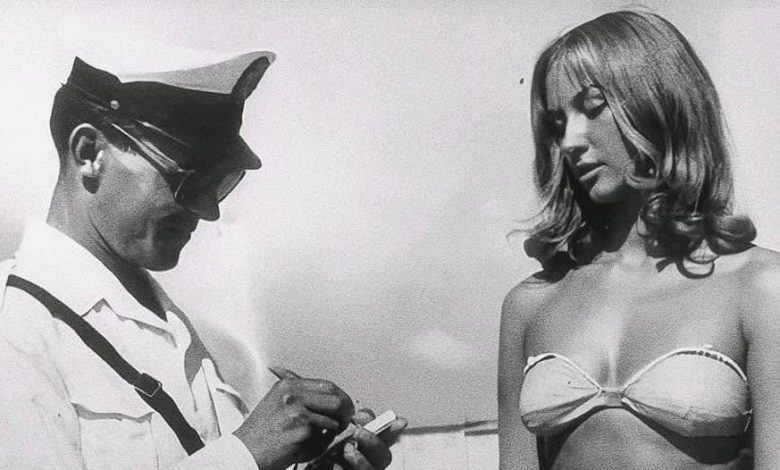
Imagine a tiny piece of fabric, so small that it ignited global outrage, leading to bans and even legal issues. This was the power of the bikini, a garment that became both the perceived antagonist and the ultimate victor in a decades-long battle between societal expectations of “freedom and modesty.” Even the highest religious authorities considered it problematic. Governments around the world attempted to outlaw its presence on beaches and in public spaces.
Despite these strong objections, women continued to embrace the bikini, each appearance pushing the boundaries and gradually “changing the rules with each daring look.”
From Full Coverage to Bare Essentials: Early Swimwear
The elegant and contemporary swimwear designs we see today stand in stark contrast to the styles of the early 20th century. Back then, swimsuits were typically large, encompassing the entire body, and often made of wool. Their primary purpose was to shield swimmers from the sun, emphasizing “modesty, not about style.”
Across the United States, beaches enforced strict dress codes for swimwear. In their insightful work on the cultural landscape of the 1920s, Kathleen Morgan Drowne and Patrick Huber note that places like “Chicago’s Clarendon Beach even employed tailors to make last-minute modifications to swimwear that was judged to be overly exposing.”
Similar regulations sprung up nationwide. For instance, in 1915, Coney Island specifically “outlawed swimming socks that revealed ‘dimpled knees.’” Adding to this atmosphere of strict enforcement, beach police in Washington, D.C., were known to use actual tape measures to ensure compliance with these stringent laws.
Challenging Conventions: The Dawn of Change
In the early 1900s, the prevailing principle was clearly “concealment.” The unwritten rule dictated that both men and women should be covered from neck to knee in their swimwear. Any visible skin beyond that was considered, quite simply, “scandalous.”
However, the winds of change were beginning to blow. One of the first individuals to openly challenge these deeply ingrained conventions was the remarkable Australian swimmer, Annette Kellerman. In 1907, she made a bold choice to abandon the widely accepted pantaloons in favor of a revolutionary one-piece suit that daringly exposed her arms, legs, and neck.
Kellerman, affectionately known as “the Australian Mermaid” due to her exceptional aquatic talents, dedicated a significant portion of her life to questioning established social norms and “redefining values.”
While concrete official records may be elusive, “Kellerman claims that she was taken into custody by the authorities for wearing her ‘indecent’ attire.” Regardless of the official documentation, at the time, a woman swimming in such a manner was indeed considered shocking. This event, whether or not a formal action occurred, undeniably “generated a movement and made news.”
The public was captivated by Kellerman’s audacious swimwear choice, and her innovative one-piece suits rapidly gained popularity.
Capitalizing on this overwhelming demand, “she subsequently started her own swimwear line,” and these so-called “Annette Kellermans” hold the distinction of being among the first designs to significantly “contribute to the development of contemporary women’s swimwear.”
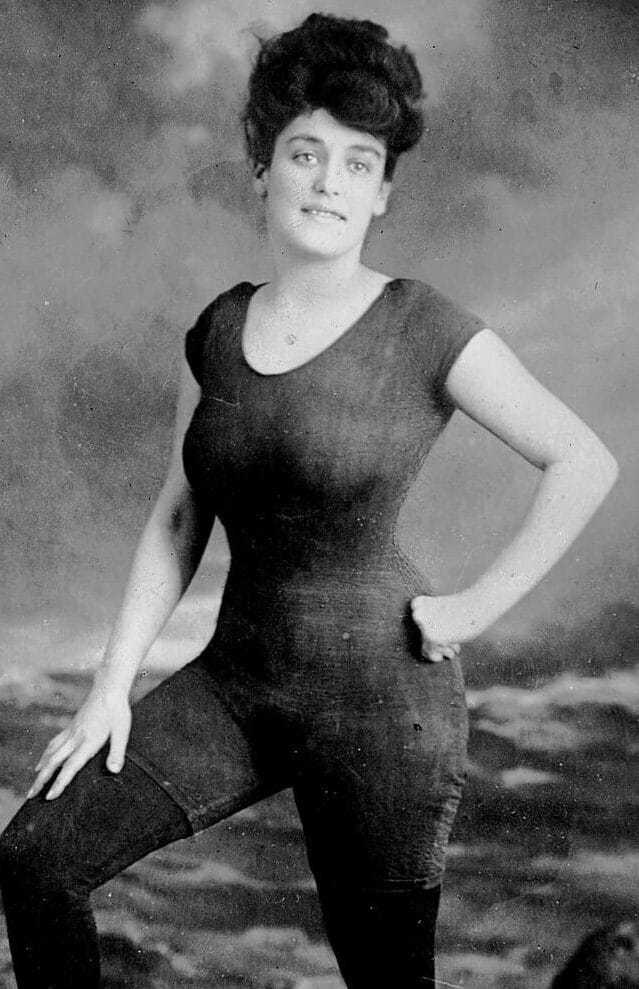
The Roaring Twenties: A Shift in Beach Fashion
As the vibrant and transformative “1920s raged on,” the carefree and rebellious “flapper look began to gain popularity at the beach as well as in evening attire.”
This shift began with a group of unconventional individuals in California who “defied convention.” These “skirts be hanged girls” had a straightforward yet revolutionary aim: “creating swimwear that women could actually wear.”
As a direct result of their efforts, swimwear began to evolve, becoming more form-fitting and, crucially, more functional. The “skirts be hanged girls” represented a burgeoning “national movement that prioritized practicality and mobility over merely style.”
Thanks to swimwear that allowed for greater ease of movement, women gradually began to reveal more skin, although by today’s standards, it was still quite modest. However, the stage was being set for a far more significant transformation.
The Bikini’s Explosive Arrival: An “Outrageous Advancement”
Then came the year 1946, marking the dramatic “birth of the bikini.” This groundbreaking two-piece swimsuit, the brainchild of French engineer Louis Réard, displayed a degree of bare skin that most people considered entirely inappropriate for public view, notably “exposed the navel.”
Intriguingly, just days before the bikini’s debut in 1946, “the U.S. conducted its first nuclear test in peacetime at Bikini Atoll, garnering international attention.”
While “designer Louis Réard never gave an explanation for his choice of the word ‘bikini,’” many believe “it was a reference to the bomb-like impact he anticipated the swimsuit would have, both commercially and culturally.” Others speculate that “the moniker recalled the Pacific’s exotic charm or likened the might of a significant event to the shock of a skimpy bikini.”
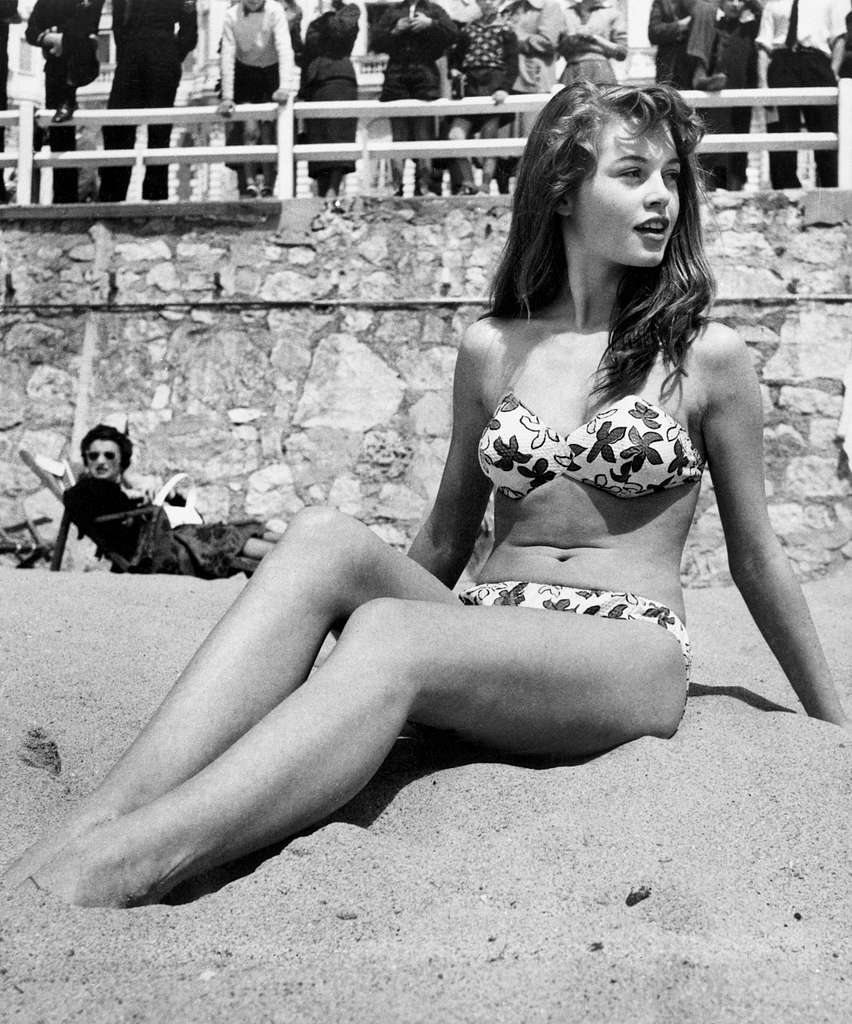
The reaction in the United States was immediate and forceful: “the bikini was deemed to be blatantly rebellious and was prohibited from numerous beaches.” Across the Atlantic, in Europe, the situation was hardly more accepting. “Bikinis were outlawed on French beaches in 1949,” and they remained forbidden in “German public pools until the 1970s.” Adding a political dimension, “some organizations denounced the bikini as an example of moral decline and capitalist degradation.”
Following a strong condemnation, several nations, including “Belgium, Italy, Portugal, and Spain, imposed statewide swimsuit bans.”
Even as late as 1952, “Australian model Ann Ferguson was asked to leave Surfers Paradise’s beach…when it was deemed that her Paula Stafford bikini was too exposing.”
The Enduring Power of an Image: Fact vs. Fiction
One particular image has become a powerful symbol, representing the widespread “controversy around the appropriateness of bikinis on public beaches.” This black-and-white photograph, often shared widely online in recent years, is notably “Italian.”
The picture depicts “a man in a white uniform…standing next to a young woman in a bikini on a beach.” Social media users frequently claim that “the scene was caught in 1957 in Rimini, Italy.” The most popular version of the story asserts that “the woman was addressed by the male, who is a police officer, for simply wearing a bikini.”
This very image was featured in a “2023 Reddit post that received 1,400 comments and more than 31,000 upvotes” with the simple caption: “A police officer addresses a woman for wearing a bikini, 1957.”
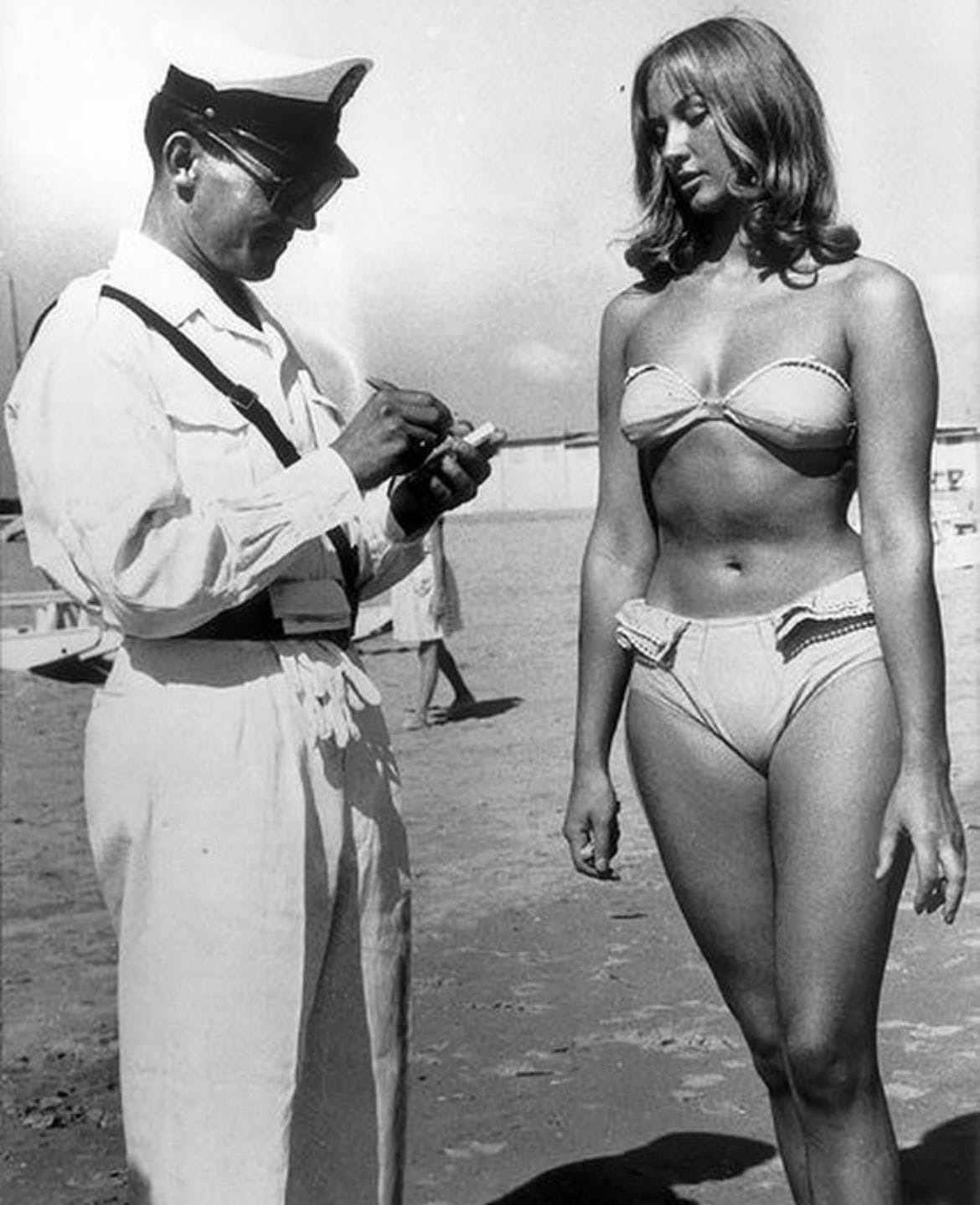
But was this widely circulated story “real, though?”
While “the backstory is still unknown, but the shot itself is real—there is no indication of computer manipulation.” Crucially, “there is no concrete evidence that the woman’s swimsuit led to any formal action.” Some speculate “the officer might have been speaking to her for a whole different reason, while others think it might have been a staged situation with actors or models.”
“Nevertheless, the picture touched a nerve.”
Even though “the photo’s backstory is still unknown,” Gianluca Braschi, the director of the State Archives of Rimini, confirmed via email to Snopes that “swimsuit restrictions were in effect in Italy at the time.”
According to Braschi, “‘bathing in public view in a state of complete nudity and with indecent swimwear’ was prohibited by law in 1932.” He further noted that “technically, that law was still in effect until 2000, but its application was inconsistent.”
Therefore, while the complete truth behind this viral image may remain a mystery, it undeniably “captures a very real tension from the time period where bikinis weren’t simply eye-catching. They might also lead to official attention.”
Hollywood’s Influence: A Cultural Shift
The bikini’s true ascent to mainstream popularity didn’t occur until the “1960s.” This rise was significantly fueled by “cultural changes” that paved the way for more daring swimwear styles.
However, even then, “there were differences in public opinion.” More conservative segments of society continued to resist “the small two-piece.”
One notable example of this resistance was “the Hays Code, also known as the United States Motion Picture Production Code, which went into effect in 1934.” This code “discouraged the display of the navel in movies, although it permitted two-piece attire.” Adding further pressure, “some organizations urged Hollywood and foreign filmmakers to completely avoid bikinis on the big screen.”
Despite these efforts, the emergence of influential “Hollywood celebrities such as Brigitte Bardot, Ursula Andress, and Marilyn Monroe contributed to a redefining of the ideals of body confidence and beauty.” These iconic figures not only wore swimwear but became powerful symbols associated with it.
The Iconic Bikini-Wearing Woman
The French actress “Brigitte Bardot may have done more than anybody else to bring the bikini to the attention of the world.”
More than just wearing one, “she embraced her bikini.” In her breakthrough role in “The Girl in the Bikini,” Bardot transformed the swimsuit “into a cultural statement.” The film prominently featured “her physique, in a revealing, strapless bikini top.”
With her “long, disheveled hair and easygoing demeanor,” Bardot was challenging established “norms of how women may be portrayed on cinema.”
While the film certainly presented her in harmony with “the sun and the ocean,” it’s undeniable that “the camera focused on her physique.” Despite being framed in a way reminiscent of traditional imagery, “Bardot was more than simply a pretty face; she was the first actress to feature a bikini in a major part and give it a storyline.”
Although she wasn’t the first woman to wear a bikini, “Bardot was the first to use storytelling to make the bikini iconic,” and the film’s success in the United States “catapulted her into immediate international stardom.”
Similarly, “Ursula Andress’s white bikini from Dr. No (1962) instantly became an icon” because it powerfully “brought together appeal, strength, and cinematic impact in a way that had never been seen before.”
Emerging from the water, Andress was far more than just visually stunning; “she was strong, confident, and unforgettable.” This iconic moment “solidified the bikini as a representation of fearless femininity in popular culture and established her as the quintessential Bond girl.”
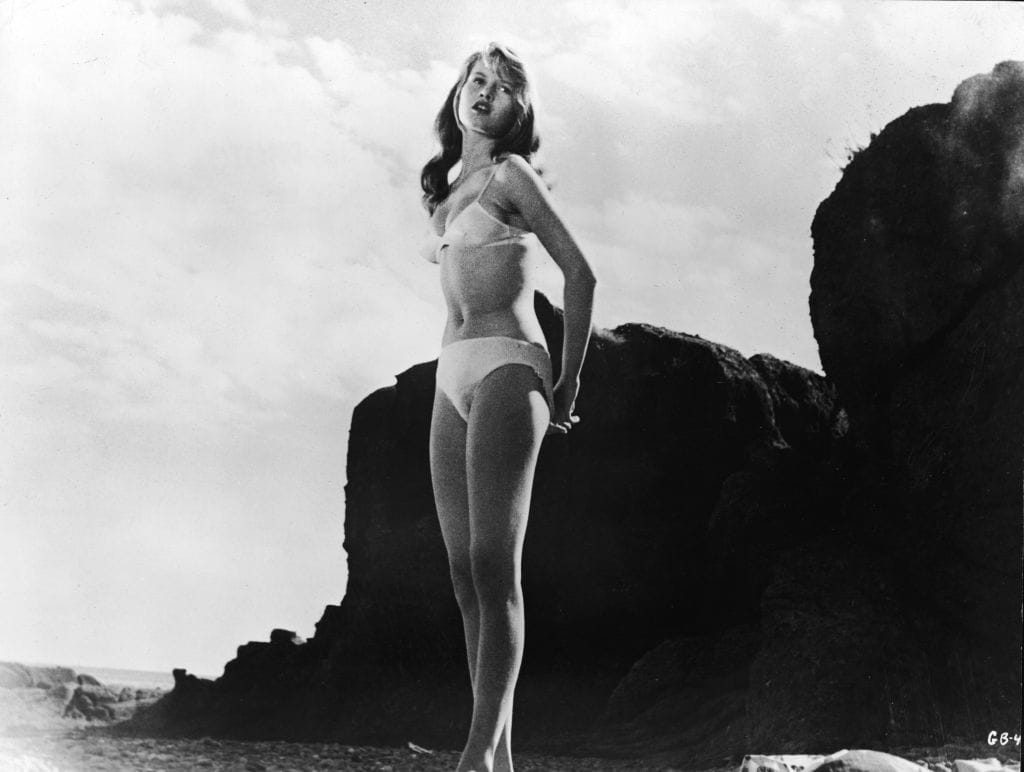
By the “1970s,” the bikini had firmly established its popularity. The introduction of increasingly revealing styles like “string bikinis and minimal bottoms” pushed swimwear to become even more exposing. As the emphasis on the “modesty” of the early 20th century waned, even “men’s swim trunks also became smaller.”
Modern Swimwear: Embracing Diversity and Body Positivity
In the “twenty-first century,” the act of wearing swimwear transcends mere adherence to social norms. The swimwear market has experienced significant growth, offering an expansive “array of options.”
Today, “there is something for everyone, ranging from daring styles to minimal bikinis and understated one-pieces.” Furthermore, the cultural “discussion of body types has changed dramatically.” Now, individuals “of all shapes, sizes, and backgrounds freely express themselves at the beach or pool, demonstrating ease, confidence, and body positivity.”
“The days of strict swimwear rules are long gone.” Currently, “it all comes down to individual preference and self-expression.” The evolving attitudes in America and beyond towards what is considered appropriate, whether it’s the most minimal bikini or a fully covering swimsuit, reflect “a society that is far more welcoming and inclusive.”
The historical “fight for modesty has transformed into a celebration of freedom, uniqueness, and diversity.” So, the next time you head to the beach, remember that “the road to self-expression that the swimsuit symbolizes is more important than the swimsuit itself.”




